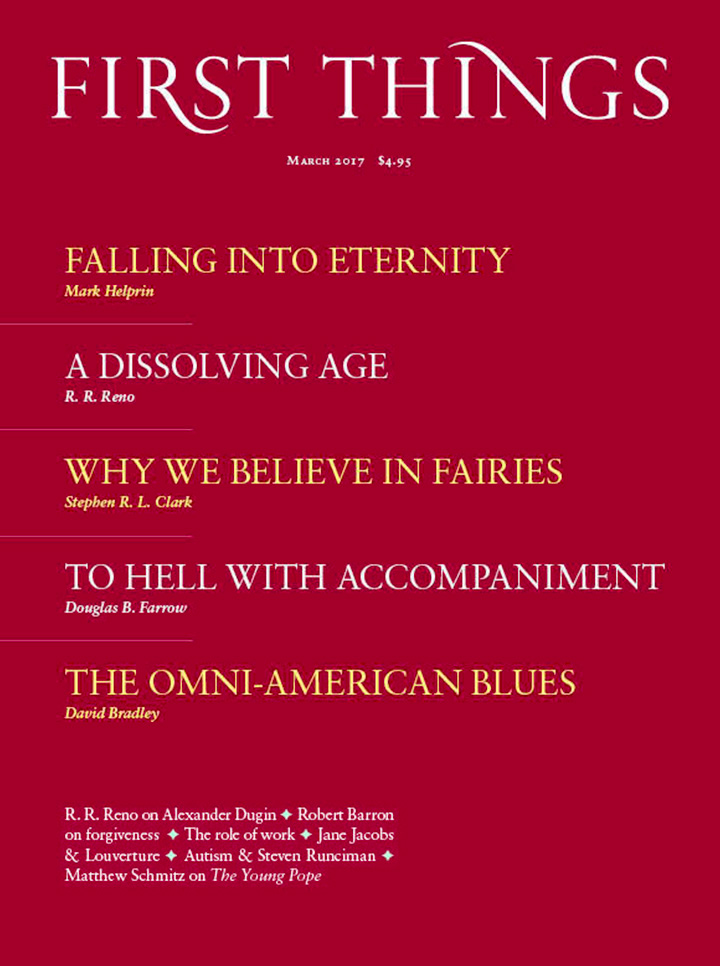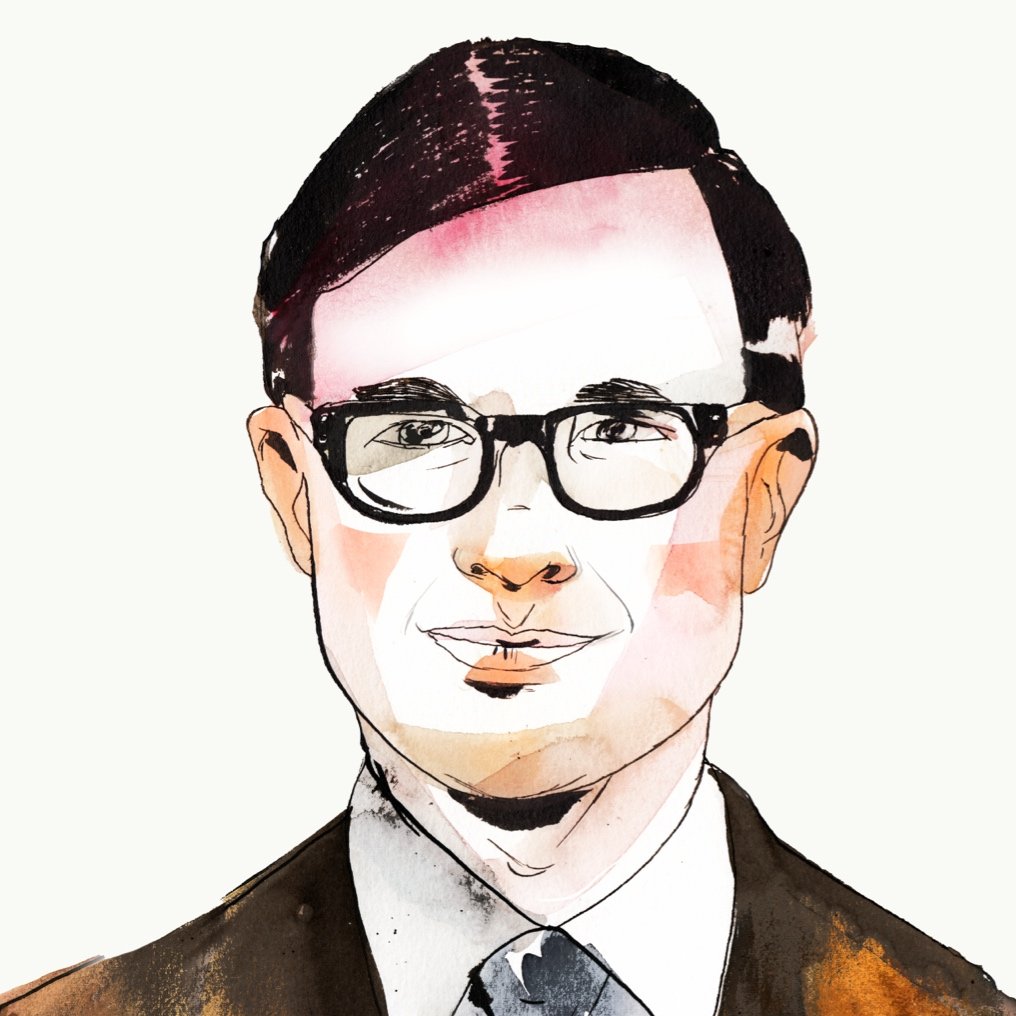The Young Pope, HBO’s series about an arch-reactionary successor to Pope Francis, is often boring and occasionally blasphemous, but its images are splendid: Jude Law, dressed in papal white, reclining with a cigarette, as menacing as Joseph Cotten in Shadow of a Doubt. Jude Law, standing on the sedia gestatoria, arms outstretched like Pius XII. Jude Law, celebrating the Tridentine Rite as if Paul VI had never reigned.
Each of these images affords the thrill of transgression. Just as AMC’s Mad Men offered its viewers the frisson of watching natty and unpleasant people smoke and drink in the office (a relief from casual Fridays, anti-smoking campaigns, and corporate sponsorship of every enlightened cause), The Young Pope depicts a Church that no longer seeks the favor of the world—and is all the more fabulous for it.
Upon his election, the young pope takes the name Pius XIII to signal a return to the past. When he addresses his cardinals, he lays out his anti-modern program: “Tolerance doesn’t live here anymore. It’s been evicted. It vacated the house for the new tenant, who has diametrically opposite tastes in decorating.” Diametrically opposite, and much improved. “The liturgy will no longer be a social engagement,” he declares. I confess that when I heard him say, “The Vatican must immediately buy back the papal tiara,” I let out a whoop.
Paolo Sorrentino, who wrote and directed the series, does not seem to be a traditional Catholic, but he is skeptical of attempts to modernize the faith. “It’s possible that after a very liberal pope, there is someone that might have very different ideas,” he said at a press conference. “I think it’s an illusion that the Church has a long-term idea towards modernity.” The Young Pope reveals the exhaustion of attempts to make the Church attractive by conforming it to the world. Reveling in supposedly old-fashioned garments like the papal red shoes and wide-brimmed saturno, it shows how attractive an unapologetically traditional Catholicism can be.
Sorrentino is not the first artist to admire Catholic tradition without adhering to it. Perhaps because they stand at some distance from the faith, or perhaps because they are trained in manipulating forms, artists have a way of hitting on truths about the Church that many Catholics cannot see. The signatories of the 1971 “Agatha Christie Letter” that pleaded for the preservation of the Latin Mass—people like Vladimir Ashkenazy, Agatha Christie, Graham Greene, Nancy Mitford, Iris Murdoch, and Joan Sutherland—were not generally Catholics, let alone traditional ones. But as artists, they were able to see the beauty and value of a liturgical form that too many practicing Catholics, through familiarity, had foolishly come to despise.
As a filmmaker, Sorrentino is particularly alert to the power of images. “In the 60s,” says Pius, “the young people that protested in the streets spouted all kinds of heresies. All except one: power to the imagination. In that, they were correct.” He vows that his first public appearance will be a great visual event, a “dazzling image, so dazzling it blinds people.” For Sorrentino, the Church is most eloquent in its pomp and dumbshow.
Marshall McLuhan! Thou shouldst be living at this hour. The media theorist believed that every group needed a common symbol or code, something that set them apart and made clear their purpose. Often this would involve “costume and vestment”—visible markers of identity. “What the young are obviously telling us is this: we want beards, we want massive costumes and vestments for everybody. We do not want any of this simple, plain, individual stuff.” Decades later, watching HBO, it is hard to deny that McLuhan was right.
Sorrentino seized on the idea for making a show about a reactionary young pope after talking to Vatican watchers who thought any successor to Francis was likely to be more traditional even than John Paul II and Benedict XVI. This has been my hope for some time, and I am gratified to see it realized on-screen. What I find genuinely impressive is the way Sorrentino captures one of the least-noticed conflicts in the Church today: a cold war between old and young, in which accusations of effeminacy and talk of “cohort replacement” are unhappily traded.
Pope Francis is one of the great antagonists in this battle. He has a penchant for anecdotes in which young priests are rigid and worldly, while older ones are gentle and wise. At a press conference in October, Francis told a story about a parish in Spain where an old priest had been replaced by a young one. Whereas the first pastor had accompanied a transgender person in the parish, the new one (so Francis said) stood on the sidewalk yelling, “You’ll go to hell!” In a homily in September, he made fun of young priests for wearing more traditional vestments: “And it is said that the Church does not allow women priests!”
However one weighs those specific remarks, Francis has a point. Young people really do desire structure today. Call it “rigidity” if you like, but they have had occasion to learn the value of rules. Some of them would have been spared a great deal of misery if our Church and society had been more rigid on certain points.
Sorrentino understands this. The young pope is an orphan, you see, having been abandoned at a young age by his parents—two freethinking hippies. It is because he has lacked a mother and father that he has come to see the value of traditional authority. An exchange between him and an old cardinal is telling:
“You surprise me, Holy Father. You are young, and yet you have such old ideas.”
“You’re wrong about that. I’m an orphan, and orphans are never young.”
“But the majority of churchgoers are not orphans.”
“Says who? You really think the only orphans are those without a mother and father?”
With a single line, The Young Pope hits on what life has been like for the children of the baby boomers. These young people make up a generation of orphans, and not just because so many of their parents divorced and remarried. The baby boomers defined themselves by revolution, and even after that revolution failed, they refused to take on the stern trappings of authority. Rather than forbid and command, they sought to be understanding and therapeutic. They refused to take on the hard roles of father and mother, and so they made their children into orphans.
Among my peers there is a vague, floating sense of dislocation and disinheritance. They have been schooled in rebellion but have nothing to rebel against. This is the cause, I think, of the enthusiasm many young people show for ritual, ceremony, and all things traditional. Having been raised in a culture of unending pseudo-spontaneity, they have had time to count its costs. They prefer more rigid forms.
Of course, Christ is not another Confucius seeking the restoration of earthly order. He disrupts our easy lives by asking us to order them toward him. Sometimes this will mean pitting father against son, but after years of mistrust between Catholics old and young, I think we need a new Elijah, a man who will turn the hearts of the fathers to their children and the hearts of the children to their fathers.
This is the great consolation promised in the Book of Malachi, but before it comes, God’s people are told to repent. They have shown contempt for the Lord’s table, they have divorced the wives of their youth, and they have wearied the Lord by saying, “Every one that doeth evil is good in the sight of the Lord.” These are the precise issues splitting the Church today. (Some enterprising historical-critical scholar should take a second look at Malachi, which reads suspiciously like a forgery produced with an eye to current debates.) However much we hope for peace, a Church that lacks respect for the altar, sanctions adultery, or says that evildoers are good in the sight of the Lord will have trouble reconciling father and child.
When I think of what it has been like to come up under the boomers, I recall an episode from the first year of Francis’s reign. He was making a visit to the Vatican Grottos, under whose vaults his various predecessors, saint and heretic, Peter and Honorius, are laid out alike. With cameras rolling, he paused to greet the attendants who waited at the entrance. There he noticed an altar boy who had his hands clasped in an attitude of reverence. Francis began to tease him: “Are your hands bound together? It looks like they’re stuck,” he said and pulled them apart. As Francis went down into the tombs, the boy put his hands back together.
Matthew Schmitz is literary editor of First Things.


